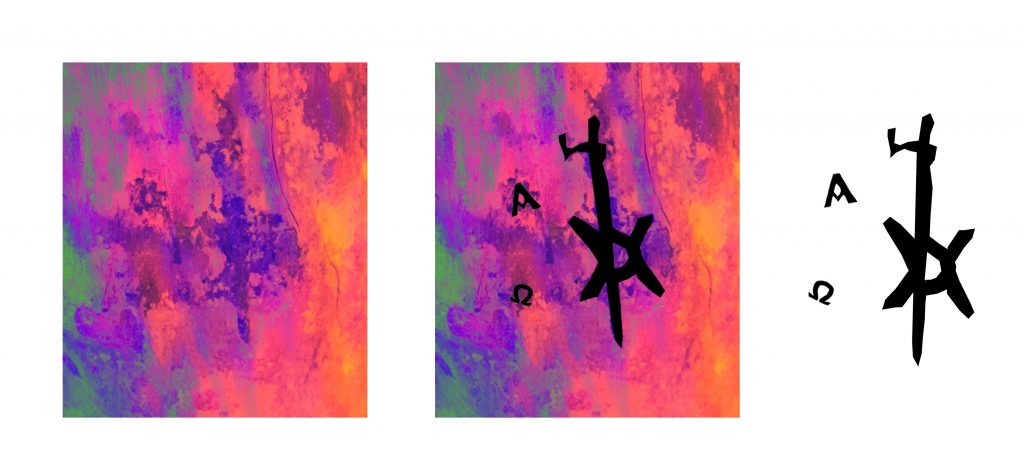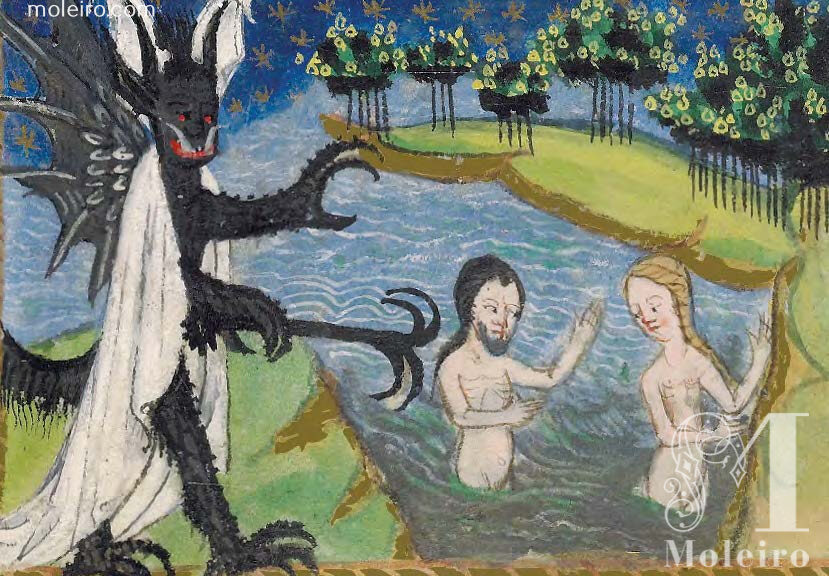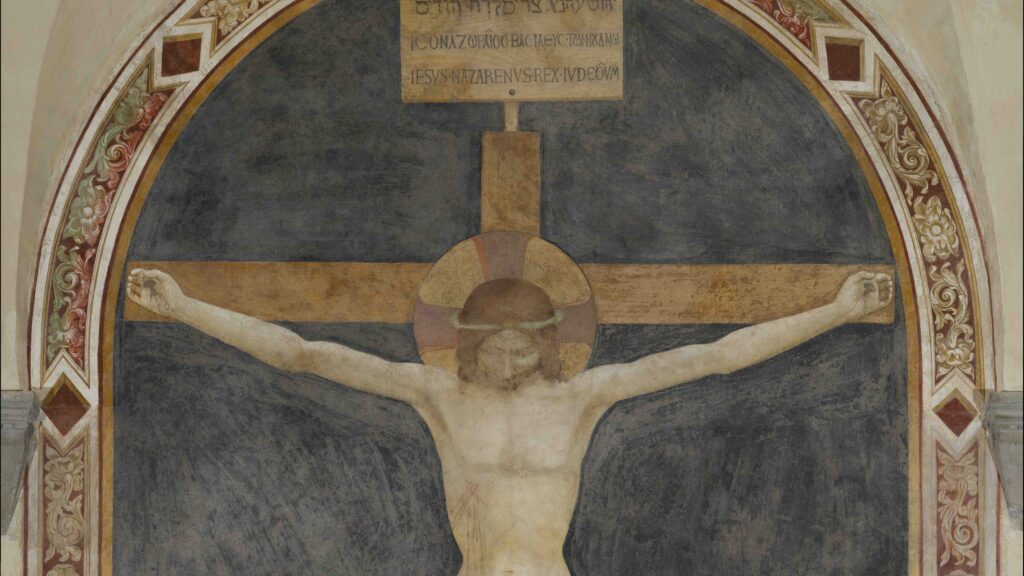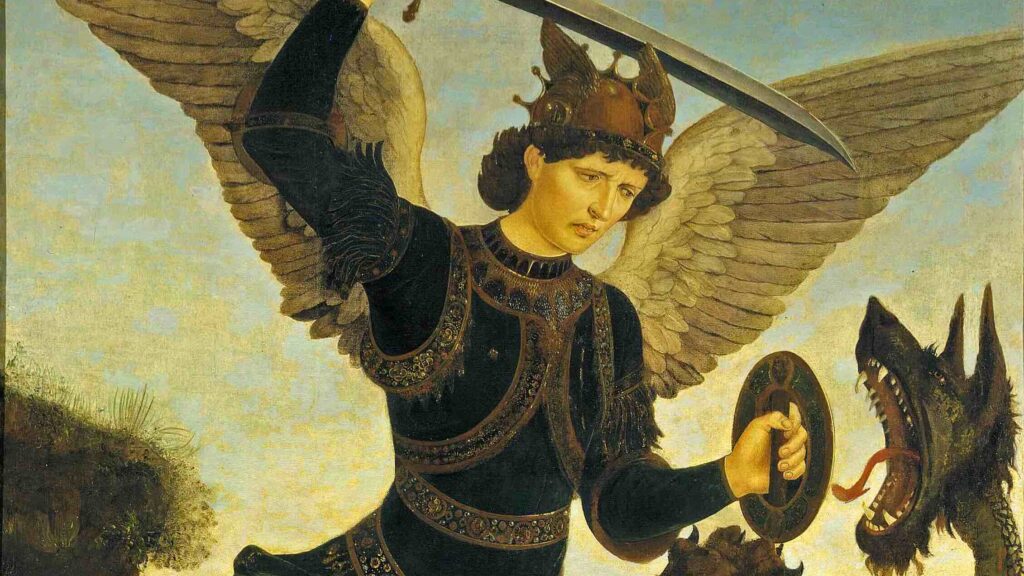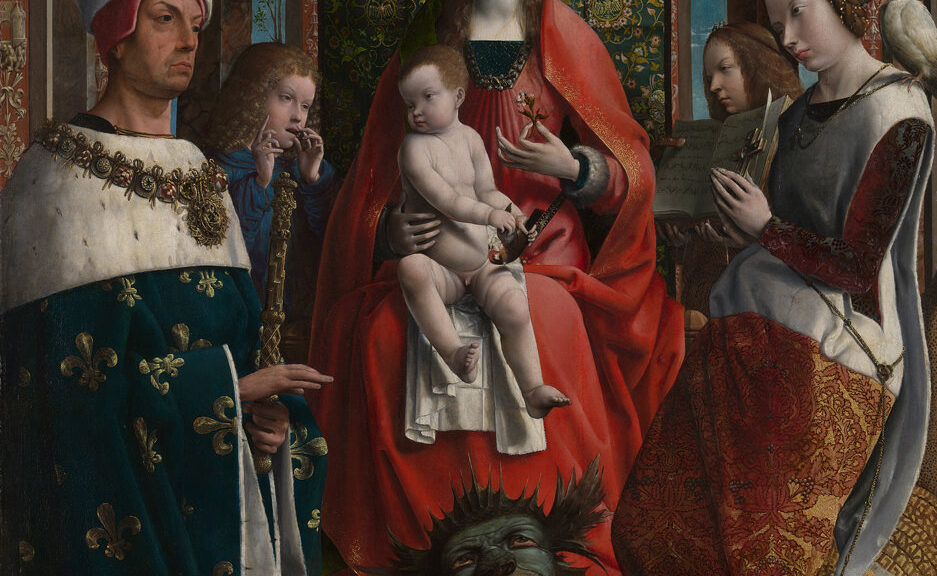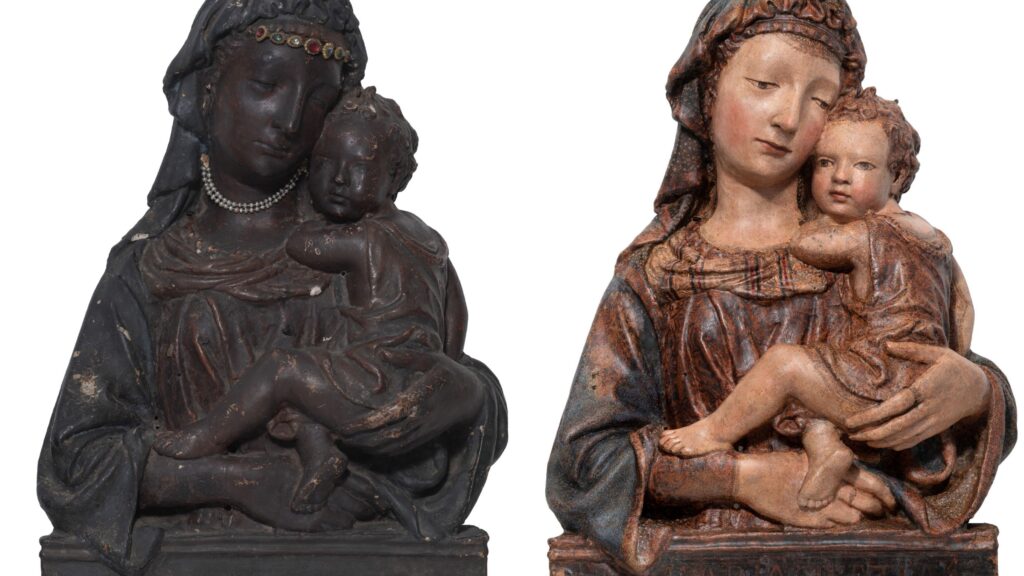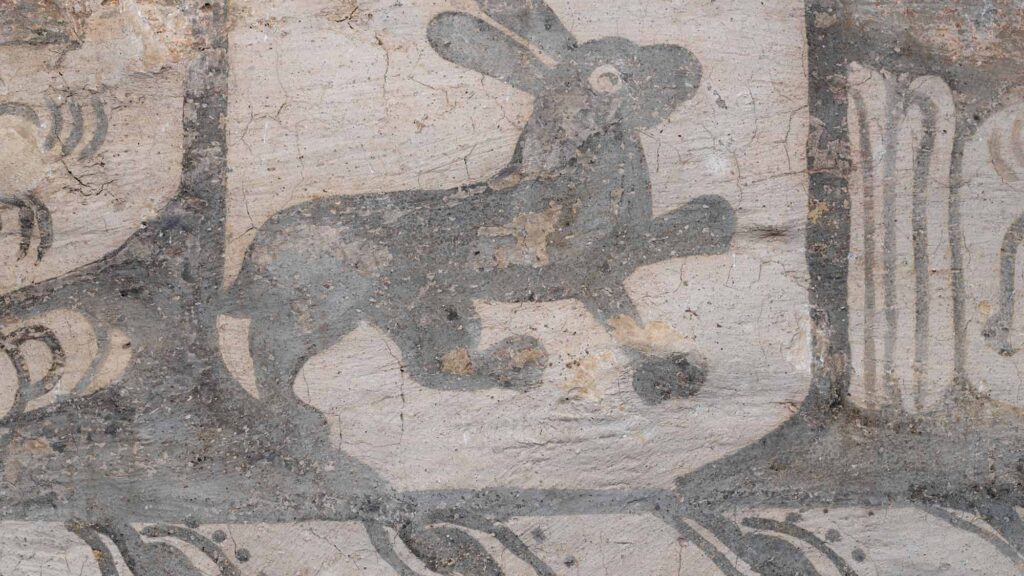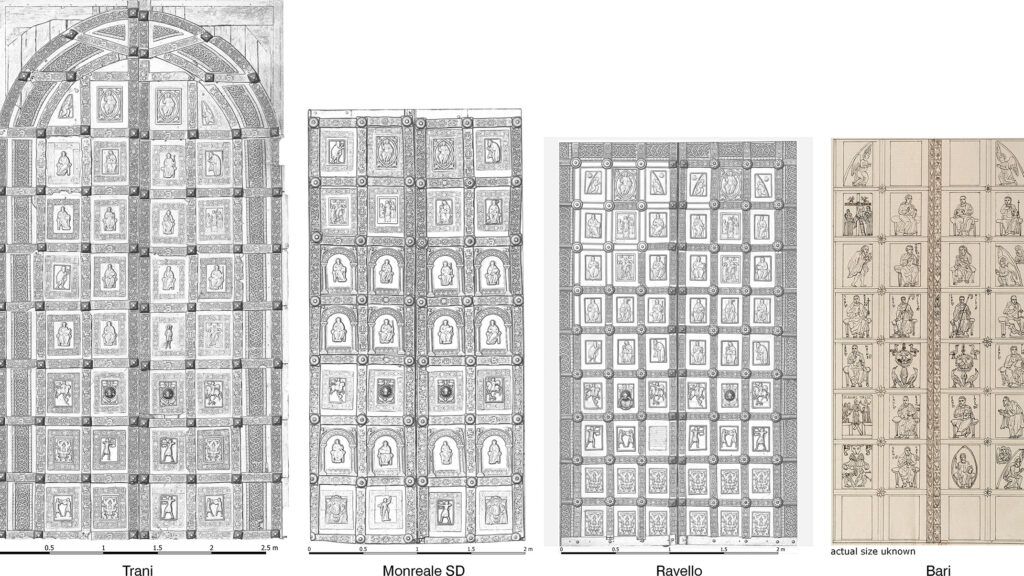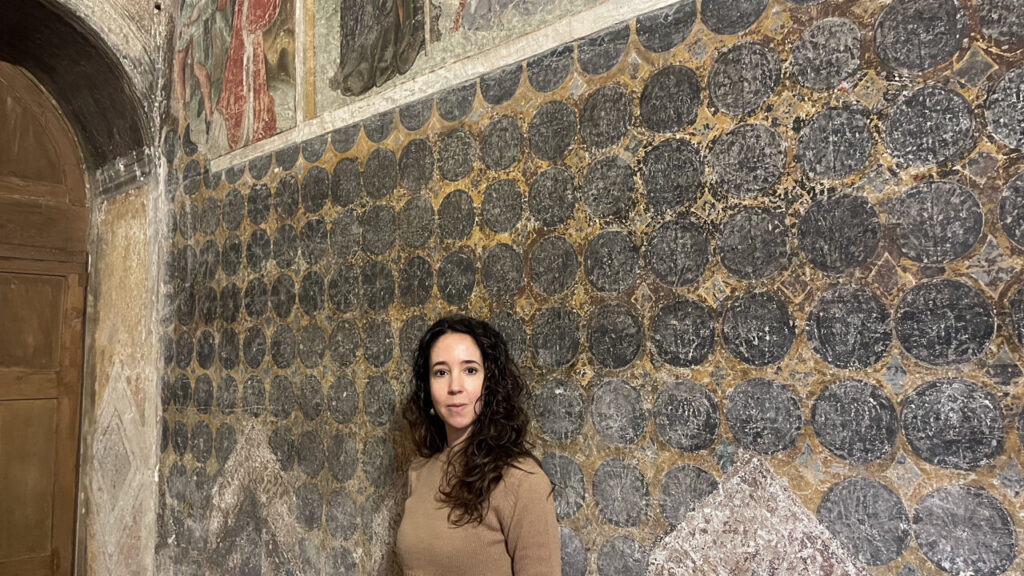Marked by Faith: Tattoos and the Christian Body in the Middle Ages
Tattoos in the Middle Ages? While often associated with criminals or pagans, these marks on the skin could also signal Christian devotion, sacred journeys, and personal identity in unexpected ways.
The Hours of Jean de Montauban: Apocrypha and Devotion in a Medieval Manuscript
Discover how a 15th-century Book of Hours uses vivid imagery from the Vita Adae et Evae to explore apocryphal stories of Adam and Eve, spiritual struggle, and medieval views on sin and redemption.
Renaissance Fresco Restored in Italy
A rarely seen Renaissance fresco by Beato Angelico has been restored at the Convent of San Domenico in Fiesole, near Florence. The Crucifixion scene reveals new insights into the artist’s early work.
15th-century Florentine Masterpiece to be Restored
Piero del Pollaiolo’s ‘Saint Michael the Archangel Defeating the Dragon’ will undergo conservation at the Bardini Museum
National Gallery Acquires Mysterious Northern Renaissance Masterpiece
The National Gallery has acquired a mysterious and richly detailed Northern Renaissance altarpiece from around 1510. Featuring saints, angels, dragons, and eccentric iconography, the anonymous masterpiece has not been seen publicly since 1960.
5 Things You Didn’t Know About the Crown of Thorns
Discover five surprising facts about the Crown of Thorns, from its origins as a leafy wreath to its role in medieval kingship and Christian art.
Lost for Decades, a Medieval Madonna and Child Returns in Stunning Restoration
A 15th-century stucco Madonna and Child, hidden for over 70 years, has undergone a dramatic restoration in Florence. Once discoloured and forgotten, the sculpture now reveals its original colours and exquisite detail.
Tudor Wall Paintings Uncovered in Northern England Lodge
Rare 16th-century wall paintings have been uncovered at The Ashes, a former Tudor hunting lodge located in what was once Inglewood Forest, near…
Digital Technology Helps Solve a 12th-Century Mystery: Which of Barisanus of Trani’s Bronze Doors Came First?
A team of researchers has used cutting-edge scientific tools to help solve a long-standing mystery in medieval art history: the chronological order of the monumental bronze doors created by the 12th-century artisan Barisanus of Trani.
The Angel of Le Lude: The Middle Ages’ Largest Bronze Statue
The Angel of Le Lude is a remarkable sculpture bridging the gap between medieval artistry and early Renaissance innovation. Created in 1475 by Jean Barbet, a master bronze founder from Lyon, this monumental work stands at 110 cm tall and is the largest known bronze statue of the Middle Ages.
Laughing at Evil: The Hidden Purpose of Gargoyles
Gargoyles aren’t just eerie stone figures—they were medieval weapons against evil, using fear, satire, and mockery to protect both buildings and beliefs.
Hidden in Plain Sight: A Medieval Fresco Shows Islamic Tents Used in Christian Churches
A forgotten fresco in an Italian church has revealed a surprising medieval practice—Islamic tents were used to cover Christian altars. The 13th-century fresco, recently rediscovered in Ferrara, Italy, is believed to be the only known depiction of this tradition, shedding new light on the connections between Christian and Islamic artistic influences in medieval Europe.
Why Is Saint Maurice Depicted as African? Seven Medieval Theories
Why does a 13th-century German statue depict Saint Maurice with African features? This article explores seven medieval theories, from linguistic associations to imperial propaganda, that shaped his striking portrayal in medieval art.
The Magi and Crusader Kings: Symbols of Faith and Power
What do the Three Wise Men and the Crusades have in common? Discover how medieval kings, knights, and emperors drew inspiration from the Magi’s journey, transforming their relics and symbolism into a powerful testament of faith, humility, and sacrifice.
New Medieval Books: Giants in the Medieval City
In the Late Middle Ages, particularly in German-speaking lands, the perception of giants underwent a notable transformation—from monstrous and malevolent figures to noble and heroic ones. This book explores numerous examples where giants, and those considered “gigantic,” evolved into celebrated hometown heroes.
Portrait of the Last Byzantine Emperor Discovered
Archaeologists in southern Greece have discovered a unique portrait of the last Byzantine emperor, Constantine XI Palaiologos, hidden within a layer of frescoes dating to the mid-15th century.
A Window into the Middle Ages: The Sketchbook of Villard de Honnecourt
Rediscovered in the 19th century, the sketchbook of Villard de Honnecourt quickly captivated historians and art enthusiasts as one of the most fascinating…
Centaurs vs. Sirens: A Medieval Showdown
What do a half-man, half-horse archer and a seductive half-fish siren have in common? In medieval art, they engage in an eternal struggle, symbolising the battle between vice and virtue.
Reviving a Medieval Masterpiece: Donatello’s Gattamelata Restoration Begins
Donatello’s iconic equestrian statue of Gattamelata, a pioneering medieval masterpiece, has just begun a long-awaited restoration in Padua. Supported by international organizations, this project aims to preserve the statue’s beauty and structural integrity for future generations.
New Medieval Books: Lumen: The Art and Science of Light
This book, featuring a dozen essays and over a hundred images, illuminates the significance of light in the Middle Ages. From scientific studies on optics to the ways sunlight filled churches, medieval society harnessed light in stunning and inventive ways.
New Medieval Books: Zoomorphic Incense Burners of Medieval Khurasan
In the medieval world, incense burners were a popular item, often crafted with great skill. This book explores how artisans in Central Asia shaped these metal burners into forms like lions, horses, and other animals, creating a unique and thriving industry.
Describe the jaw of a crocodile’: Leonardo da Vinci’s Animal Anatomies
Leonardo also studied and dissected animals at many points of his career. His subjects included horses, bears, monkeys, frogs, dogs and oxen – as surrogates for human material, as independent subjects of study, and on occasion to compare explicitly human and animal anatomy.
Animating Albrecht Dürer’s Cloaks
Analyzes the artwork of Albrecht Dürer to uncover insights into clothing styles, particularly focusing on coats and cloaks, and what they reveal about fashion and societal influences of his time.
Demons, Ghosts, and Goblins in Chinese Art at the Cleveland Museum of Art
The Cleveland Museum of Art (CMA) presents Demons, Ghosts, and Goblins in Chinese Art, an exhibition that explores supernatural beings in Chinese culture through paintings and sculptures. Running until January 20, 2025, the display highlights creatures that cause havoc or serve as protectors against evil forces.
Ashmolean Museum aims to purchase Fra Angelico masterpiece
The Ashmolean Museum at the University of Oxford is urgently raising funds to purchase a painting of the Crucifixion by Renaissance master Fra Angelico, created in the 1420s. The museum has until 29 October to raise £4,481,000 to buy the painting, otherwise it will be sold to a private owner outside the United Kingdom.
